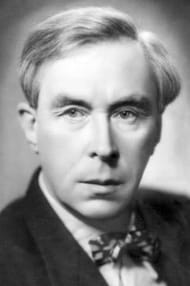

Erast Garin
Herast Pavlovich Garin (real name - Gerasimov; 1902, Ryazan - 1980, Moscow) - Soviet actor, director of theater and cinema, screenwriter. Winner of the Stalin Prize of the second degree (1941). People's Artist of the USSR (1977). Erast Gerasimov was born on October 28 (November 10), 1902 in Ryazan. He studied at the Ryazan gymnasium. After graduating in 1919, he volunteered for the Red Army. He played on the stage of the garrison theater in Ryazan (later - the 1st amateur theater of the Red Army) (1919-1921), where he participated in the comedy of Y. Knyazhnin "Sbitanschik". Ibid took the stage name "Garin". With this theater I went to Moscow, where Vs was spotted. Meyerhold, who advised him to study. In 1921 he entered the led Sun. Meyerhold State Higher Directorial Workshops (GVYRM) (later - State Higher Theater Workshops where GVYRM joined), in 1922—1926 - in the State Experimental Theater Workshops of Narkompros RSFSR (GEKTEMAS), at the same time working in the RCA in the “living newspaper” created there . Erast Garin in the 1920s In the years 1922-1936 - actor of the State Theater named after Meyerhold. Su Meyerhold appreciated his analytical, sober mind, listened to his opinion. E. Garin became one of the favorite students and actors Vs. Meyerhold. Garin and Meyerhold at the Examiner's Rehearsal The actor received his first great work in the play “D. E. "(" Give Europe! ") - M. Podgaetsky's ironic-political review from the novels of I. Ehrenburg's" Trust D. E. "and B. Kellermann's" Tunnel "(1924), where he played seven roles of inventors at once, demonstrating art lightning transformations, juggling dexterity, parody, character. The features of the future “Garinsky style” have already emerged - a unique manner of moving, speaking, a kind of facial expression, gesture. The actor paid much attention to the word, intonation and plastic development of the role, using the techniques of eccentrics, slates. E. Garin immediately moved into a number of leading actors Vs. Meyerhold, work with which decisively influenced all his work. E. Garin brought the role of Gulyachkin to fame and recognition (the play “The Mandate” by N. R. Erdman, 1925). Critics noted Gulyachkin's chameleonism, with all its “small-grained” nature of the image, “acquired the power of flaming satire from Garin.” One of the critics counted more than three hundred explosions of laughter in the hall, and they were caused mainly by Gulyachkin replicas. Chameleonism was also noted in the role of Khlestakov (“The Inspector General” by N. V. Gogol, 1926), “but in all transformations of Garinsky Khlestakov there was always a note of coldish, ominous arrogance”. Garinsky Khlestakov became the youngest in the history of the Russian scene. His Chatsky in “Woe to Mind” (“Woe from Wit” by A. S. Griboyedov, 1928) was unlike the others played by him from Chatsky, he was unusual, unexpected. E. Garin was not just an actor comedic, eccentric, a simple actor, as he was seen before Chatsky: he was surprisingly lyrical, which became the main finding of Sun. Meyerhold in the play. The first roles in the Theater. Su Meyerhold had a great influence on all the subsequent creative fate of the actor and predetermined his penchant for the satire genre, close to eccentricity and buffoonade. In 1934, he was an actor at the Workers' Theater of Proletkult (artistic director S. Eisenstein).
Read more